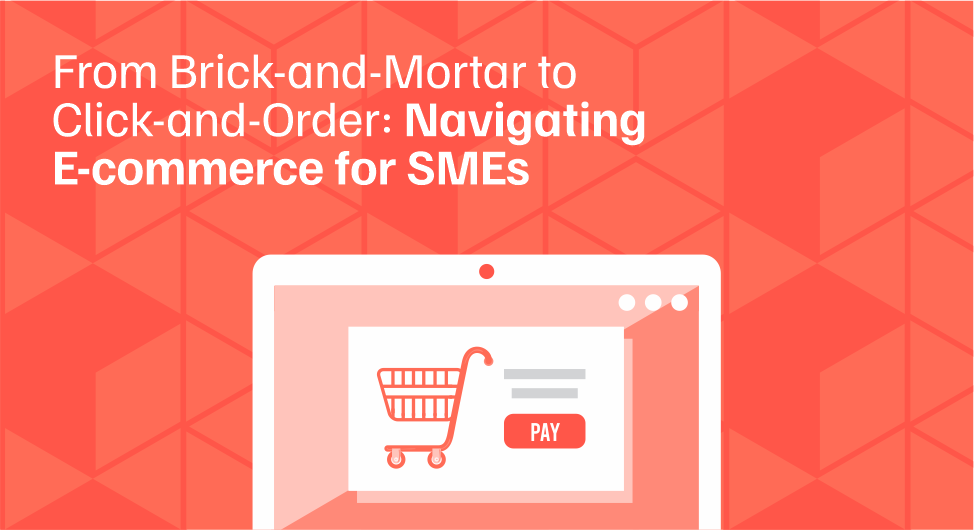From Brick-and-Mortar to Click-and-Order: Navigating E-commerce for SMEs
Introduction
The future of retail is digital. Small and medium-sized enterprises (SMEs) that once relied solely on physical storefronts are now realizing that e-commerce is not just an option it’s a necessity. With shifting consumer behaviors, increasing smartphone penetration, and the global expansion of digital payment systems, businesses that fail to transition online risk being left behind.
Yet, many SMEs hesitate, citing concerns over costs, technical know-how, and operational complexities. The reality? Transitioning to an online store is more accessible than ever, and those who embrace it strategically will not only survive but thrive.
Understanding the Digital Shift
E-commerce has been growing steadily for years, but the pandemic accelerated its adoption globally. According to a UNCTAD report, e-commerce sales rose from 16% to 19% of total global retail sales in 2020 and have continued climbing since. For SMEs, this shift presents a massive opportunity to expand beyond local markets and reach a global customer base.
However, simply setting up an online store is not enough. To truly leverage digital retail, businesses must reimagine their customer experience, optimize logistics, and integrate the right technologies.
Steps to Transition Successfully
- Assess Your Current Business Model
Before diving into e-commerce, SMEs must evaluate their current business structure and customer base. Ask:
- Which products or services have the potential to perform well online?
- Who is your target audience, and where do they shop online?
- What competitive advantages can you leverage in the digital space?
- Understanding these elements helps set a strong foundation for a smooth transition.
2. Develop a Comprehensive E-commerce Strategy
A successful online store requires more than just a website. SMEs must define clear objectives, such as:
- Expanding market reach
- Increasing sales through digital channels
- Enhancing customer experience
- Decide whether to sell through an independent website, marketplaces like Jumia, Amazon, or Shopify, or a combination of both.
3. Choose the Right Technology Platform
Selecting the right e-commerce platform is crucial. Factors to consider include:
- Scalability: Can the platform grow with your business?
- User-friendliness: Can you manage it without extensive technical knowledge?
- Integration capabilities: Can it sync with payment gateways, inventory management, and marketing tools?
- Popular platforms include Shopify, WooCommerce (for WordPress), and Magento.
4. Optimize Product Listings for Online Success
Unlike in physical stores where customers can touch and feel products, online shoppers rely on visuals and descriptions. Ensure:
- High-quality images and videos
- Detailed, SEO-optimized product descriptions
- Competitive pricing and transparent delivery information
5. Implement Secure Payment and Fulfillment Systems
Trust is a major factor in online transactions. Businesses must offer multiple secure payment options, including debit/credit cards, mobile money, and PayPal. Additionally, logistics must be streamlined to ensure fast and reliable deliveries.
6. Invest in Digital Marketing
Having an online store is one thing; driving traffic and conversions is another. SMEs should leverage:
- Social Media Marketing: Facebook, Instagram, and TikTok ads can drive targeted traffic.
- Email Marketing: Personalized offers and follow-up emails increase customer retention.
- SEO & Content Marketing: Blogging, video content, and influencer collaborations can build brand authority.
7. Monitor, Analyze, and Iterate
E-commerce is dynamic. Regularly track performance metrics like website traffic, conversion rates, and customer feedback using tools like Google Analytics. Adapt based on insights to improve user experience and sales.
Case Study: Jumia Nigeria’s E-commerce Success
Jumia, Africa’s leading e-commerce platform, is a prime example of how businesses can successfully transition online. When Jumia launched in Nigeria, it faced major challenges low trust in online shopping, payment system issues, and a fragmented logistics network.
To overcome these hurdles, Jumia:
- Built a secure and user-friendly platform
- Partnered with trusted financial institutions for secure payments
- Developed a strong logistics and delivery network
- Leveraged aggressive digital marketing to attract Nigerian consumers
The result? Jumia is now one of Africa’s largest e-commerce brands, proving that a well-executed online transition can lead to massive growth. (Source: Applied Worldwide)
Conclusion
E-commerce is the future of business. SMEs that successfully transition online can unlock new revenue streams, increase customer engagement, and future-proof their businesses. The key is to approach e-commerce strategically, invest in the right tools, and continuously optimize for growth.
The question isn’t whether your business should go digital it’s how fast you can make the shift.
Reference:
https://techcabal.com/2023/06/17/giants-of-e-commerce-in-africa-the-case-of-jumia/






